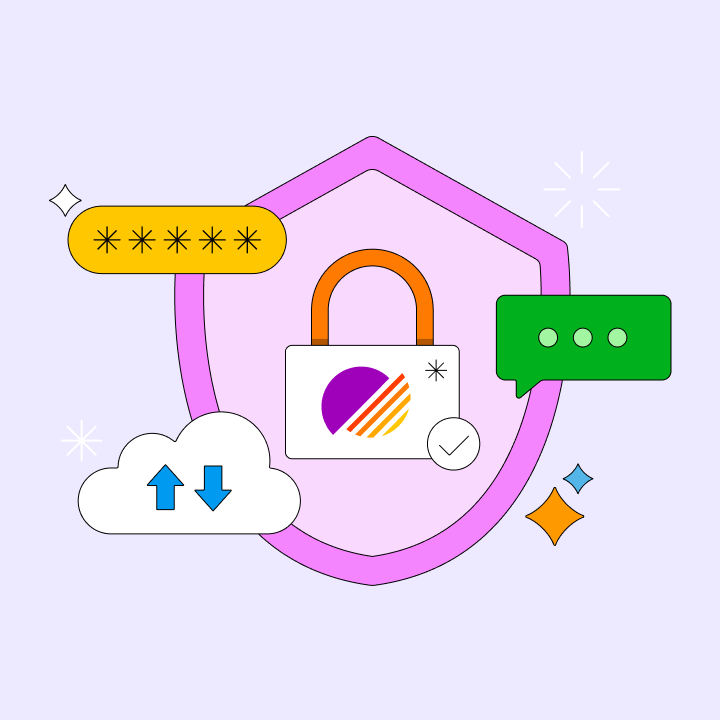Understanding how projects fit into the overall strategy is essential for effective resource management, timeline adherence, and goal achievement. The project management hierarchy organizes tasks from high-level strategies to daily operations, linking portfolios, programs, and individual projects to ensure alignment with business objectives.
This article will clarify how the project management hierarchy functions. You will discover the distinctions between each level, learn how teams are structured, and examine real-world examples. Whether you are leading a team or managing multiple projects, this guide will help you understand your role within the hierarchy.
What Is Project Management Hierarchy?
The project management hierarchy illustrates how various components of a project are organized. It begins with portfolios at the top, followed by programs, and then individual projects. This structure provides teams with a clear pathway from strategy to execution, simplifying planning, progress tracking, and decision-making at all levels.
Each level in the hierarchy serves a specific purpose and has distinct responsibilities. Portfolios focus on long-term goals and business growth, programs manage related projects collectively, and individual projects tackle specific tasks. This organization enhances communication and ensures that every project contributes to business success and resource management.
Portfolio, Program, and Project: The Core Structure
At the top of the project management hierarchy is the portfolio, which encompasses all programs and projects that align with a company’s long-term goals and strategies. Portfolios assist leaders in determining where to allocate time, money, and resources for maximum impact, emphasizing value, risk, performance, and alignment with overall business strategy.
Beneath the portfolio is the program level, which groups related projects under a common objective. This approach enhances coordination, resource utilization, scheduling, and overall outcomes by managing projects together.
At the base is the project level, where tangible work occurs. Each project has a defined goal, timeline, team, budget, and tasks. Projects are the actionable steps that transform strategic plans into real results that benefit the business. In the project management hierarchy, projects support programs, which in turn support the broader portfolio and long-term business direction.
Key Roles Within the Hierarchy
Every level of the project management hierarchy requires leadership and decision-making. These roles ensure that work remains on track and aligned with company objectives. Project managers, program managers, and portfolio managers each have unique responsibilities. Understanding these differences enhances team collaboration and reduces confusion.
Project Manager vs. Program Manager vs. Portfolio Manager
A project manager oversees a specific project, planning tasks, managing the team, setting deadlines, and ensuring the project stays on schedule and within budget. Their focus is on short-term goals, and they report progress to program managers.
A program manager leads a group of related projects, ensuring that all projects within the program contribute to a larger goal. They support project managers and address issues that arise across projects. Above them, a portfolio manager oversees multiple programs and makes strategic decisions, helping top leaders select the right initiatives.
Project manager vs. Program manager >
Levels of Project Management Titles
The project management hierarchy includes various job titles based on experience, with each level having distinct responsibilities and skills. Understanding these roles can help you advance your career and clarify how teams are structured and managed at different stages.
Entry-level Roles
Entry-level positions, such as project coordinators or junior project managers, assist experienced leaders. They help with scheduling, reporting, communication, and tracking task progress. These roles support project managers and provide opportunities to learn about managing smaller tasks and tools.
Mid-level Roles
Mid-level positions typically include project managers or, occasionally, assistant program managers. These individuals manage daily activities, motivate team members, and address client concerns. They consistently deal with performance metrics, budget constraints, and deadlines.
Senior-level Roles
Senior-level roles encompass program managers and portfolio managers who focus on strategy and planning. They make high-level decisions, lead multiple teams, and collaborate closely with company leaders. Their primary responsibility is to ensure that all projects align with business success, positioning them at the top of the project management hierarchy.
Types of Organizational Structures
A company’s organizational structure significantly impacts project management. Different structures grant varying levels of authority to project managers and teams. Each model is suited to specific situations based on company goals and size, influencing how teams collaborate.
Functional Model
The functional structure is the most common organizational setup, grouping employees by their job roles, such as marketing, finance, or engineering. In this model, project managers have limited authority, with department heads controlling most operations. Projects progress through departments sequentially, which can lead to delays.
Communication between departments in a functional structure can be slow and unclear, as teams may prioritize departmental goals over the project’s overall success. This model is effective for simple, routine tasks but may hinder flexibility and speed for larger, dynamic projects.
Matrix Model
The matrix structure combines functional and project-based models, allowing employees to report to both a project manager and a department manager. This arrangement gives project managers more control while maintaining connections to departmental support.
Matrix structures facilitate better resource sharing, knowledge exchange, and collaboration. However, they can also create confusion due to dual reporting lines. This model is well-suited for large companies with multiple active projects across various areas, promoting flexibility and cross-team cooperation.
Projectized Model
In a projectized structure, project managers have full control over their teams throughout the project lifecycle. Teams are formed specifically for each project and report solely to the project manager. Once a project concludes, team members may transition to new projects or disband entirely. This model places projects at the center of the project management hierarchy, ensuring focused execution and accountability.
Projectized structures enable quick decision-making, clear roles, strong team cohesion, and rapid responses. They are ideal for large, one-time projects, such as construction, product launches, or government contracts. However, this model can be costly for smaller companies that frequently need to form new teams for each project.
The Importance of Project Hierarchy
A well-defined project management hierarchy keeps work organized and straightforward. It clarifies who is responsible at each level and how tasks transition from planning to execution. With a clear structure, team members understand their roles and reporting lines, which minimizes confusion and enhances communication throughout the project.
A strong hierarchy also facilitates better decision-making and resource management. Leaders can monitor progress, address issues promptly, and ensure that each project aligns with business objectives. This connection between strategy and outcomes helps organizations complete projects on time and within budget. Therefore, a solid project management hierarchy is essential for any successful organization.
Advantages of Clear Role Definition and Alignment
Clearly defined roles and alignment within the project management hierarchy streamline teamwork. When everyone understands their responsibilities and how they relate to others, projects run more smoothly. This clarity reduces mistakes, delays, and misunderstandings among team members, leading to improved performance and quicker results for the entire organization.
Enhanced Communication
When roles are well-defined, team members know exactly whom to approach for updates or assistance. This clarity prevents mixed messages and redundant efforts, keeping everyone aligned during project tasks. In a structured project management hierarchy, effective communication enables teams to work more efficiently and confidently.
Quicker Decision-Making
With clearly defined responsibilities, decisions can be made swiftly. The person in charge knows when to intervene and approve actions, allowing work to progress without unnecessary delays. A well-structured hierarchy empowers leaders to adapt quickly to changes, ensuring that deadlines are met.
Improved Teamwork
Clear roles minimize overlap and confusion, fostering a collaborative environment. Each team member can focus on their specific tasks while contributing to the overall project goals. This organization promotes respect and productivity, leading to better teamwork and smoother daily operations.
Increased Accountability
Well-defined job descriptions clarify each person’s role in the project. This transparency encourages individuals to take ownership of their tasks, meet deadlines, and stand by their results. When issues arise, having a specific person responsible allows the team to address problems without uncertainty.
Optimal Use of Skills
When everyone understands their role, it reduces boredom and overlapping responsibilities. Managers can assign tasks that align with individual strengths, such as a developer’s knack for spreadsheets or a writer’s talent for crafting compelling narratives. This focus sharpens skills, boosts morale, and keeps the team engaged.
Real-World Example: Marketing Website Launch Hierarchy
In a marketing website launch, a clear project management hierarchy delineates responsibilities among teams. At the top, the portfolio manager oversees all digital marketing initiatives, including the website project. The program manager coordinates the entire website launch, which encompasses design, content, and SEO efforts.
Team members, such as content writers, designers, developers, and testers, report to their respective project managers. Everyone understands their roles, tasks, and how their contributions fit into the larger plan. This structure minimizes confusion, enhances communication, and keeps the project on track. With a robust project hierarchy, the website can launch smoothly and achieve business objectives.
FAQs About Project Management Hierarchy
What is a project management hierarchy?
A project management hierarchy is a structured framework that outlines how projects, programs, and portfolios are managed. It specifies who is in charge at each level and how tasks flow through the system. This organization helps clarify responsibilities and improve communication, typically starting with the portfolio level at the top, followed by the program level, and finally the project level.
How does a program differ from a project in the hierarchy?
In the project management hierarchy, a program consists of related projects managed collectively. A project is a singular effort with a specific goal, such as launching a new app. Programs focus on coordination and benefits that cannot be achieved if projects are managed independently. A program manager oversees the program, while each project has its own project manager. Programs provide better control and help align efforts with company strategy.
Why is role clarity important in project management?
Clear roles within the project management hierarchy help everyone understand their tasks and responsibilities. This clarity reduces overlap, minimizes confusion, and enhances teamwork across departments. When individuals know what is expected of them, they work more confidently and efficiently. Role clarity also enables project managers to monitor progress and hold team members accountable, resulting in better outcomes and smoother project delivery.
Can the project management hierarchy change based on company size?
Yes, the project management hierarchy can vary depending on the size and complexity of a company. Small businesses may only require a project manager and a small team, without a formal program or portfolio level. In contrast, larger organizations often utilize all three levels—portfolio, program, and project—to manage multiple tasks simultaneously. The structure can be flexible and adjusted to meet the company’s needs, resources, and goals.
Simplify Your Project Hierarchy with Morningmate
Managing portfolios, programs, and projects becomes easier with Morningmate. This all-in-one collaboration tool allows you to assign clear roles, track progress, and enhance team communication across the project management hierarchy. Whether you’re launching a website or managing multiple teams, Morningmate keeps everything organized in one place.
Start your free trial of Morningmate today and experience smoother project management!




